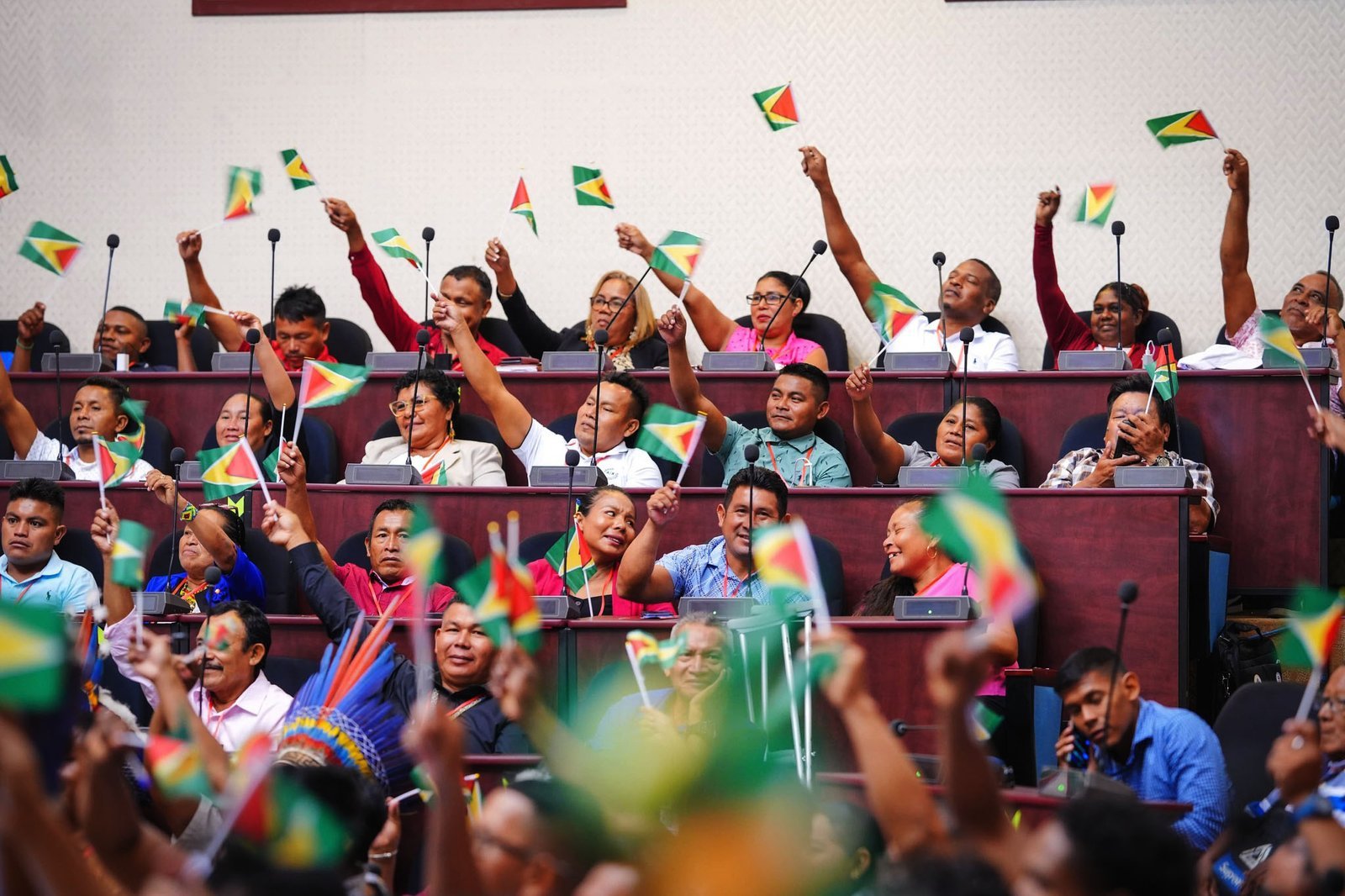Close

Since 2020, the Government of Guyana has taken deliberate steps to empower Amerindian communities in Region 1 (Barima–Waini), beginning with the reinstatement of over 150 Community Support Officers (CSOs), a programme previously discontinued in 2015 but revived to deliver crucial on-the-ground support to village councils and residents (Ministry of Amerindian Affairs, 2022). These officers assist with education, health outreach, agriculture, and youth
development across remote hinterland communities, ensuring that governance and services reach the grassroots level. The Ministry of Amerindian Affairs allocated over GYD 1.11 billion in 2022 and GYD 1.3 billion in 2024 specifically to the CSO programme (Department of Public Information, May 2024), which today supports approximately 2,700 Amerindian youths with stipends and technical training in fields such as solar power installation and mechanical repair
(Guyana Chronicle, October 2023). In addition to human resource investment, the government has allocated over GYD 40 billion across five ministries in Region 1 since 2020 for critical improvements in health, education, water, and infrastructure (Minister Collin Croal, DPI, April 2024). Further reinforcing economic self-sufficiency, the Amerindian Development Fund has seen a GYD 7.2 billion injection in 2025 for entrepreneurship grants, land titling, and cultural preservation (Office of the President, February 2025). Moreover, under the Low Carbon Development Strategy, 75 Amerindian villages in Region 1 have received a combined GYD 1.5 billion in carbon credit revenues, allowing villages to pursue their own development priorities
(Ministry of Finance, LCDS Report 2024). Community feedback has underscored the impact of these programmes: in villages such as Yarakita, CSOs are credited with supporting healthcare, school services, environmental monitoring, and local administration (Guyana Times, March 2024). These investments illustrate a holistic and community-driven development framework—one that rebuilds local leadership, generates youth employment, secures economic
autonomy, and ensures that no village is left behind.

The Guyana Project is an independent media platform delivering fact-checked, ground-level reporting on politics, economy, and public life in Guyana. With a focus on transparency and development, we bring unfiltered news and thoughtful analysis to help shape a more informed, forward-looking nation.


Lorem Ipsum is simply dummy text of the printing and typesetting industry. Lorem Ipsum has been the industry’s standard dummy text ever since the 1500s, when an unknown printer took a galley of type and scrambled it to make a type specimen book. It has survived not only five centuries, but also the leap into electronic typesetting, remaining essentially unchanged. It was popularised in the 1960s with the release of Letraset sheets containing Lorem Ipsum passages, and more recently with desktop publishing software like Aldus PageMaker including versions of Lorem Ipsum.
t is a long established fact that a reader will be distracted by the readable content of a page when looking at its layout. The point of using Lorem Ipsum is that it has a more-or-less normal distribution of letters, as opposed to using ‘Content here, content here’, making it look like readable English. Many desktop publishing packages and web page editors now use Lorem Ipsum as their default model text, and a search for ‘lorem ipsum’ will uncover many web sites still in their infancy. Various versions have evolved over the years, sometimes by accident, sometimes on purpose (injected humour and the like).
Contrary to popular belief, Lorem Ipsum is not simply random text. It has roots in a piece of classical Latin literature from 45 BC, making it over 2000 years old. Richard McClintock, a Latin professor at Hampden-Sydney College in Virginia, looked up one of the more obscure Latin words, consectetur, from a Lorem Ipsum passage, and going through the cites of the word in classical literature, discovered the undoubtable source. Lorem Ipsum comes from sections 1.10.32 and 1.10.33 of “de Finibus Bonorum et Malorum” (The Extremes of Good and Evil) by Cicero, written in 45 BC. This book is a treatise on the theory of ethics, very popular during the Renaissance. The first line of Lorem Ipsum, “Lorem ipsum dolor sit amet..”, comes from a line in section 1.10.32.